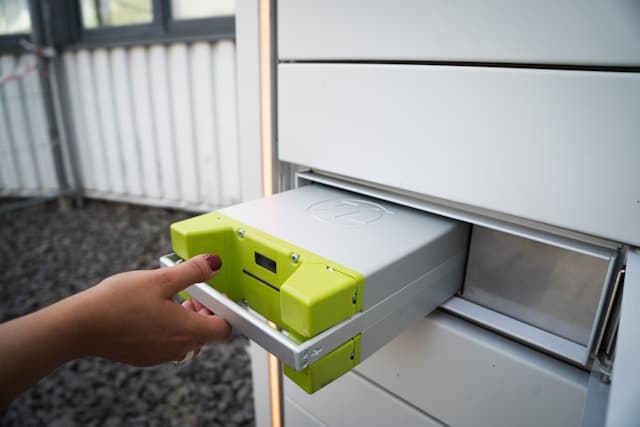How to Optimize the Battery Performance in a Nissan Leaf for Extended Range?

Today we’re going to explore the exciting realm of maximizing battery performance in your Nissan Leaf, an all-electric vehicle that has quickly become a popular choice for eco-conscious consumers. Owning an electric car like the Nissan Leaf offers a host of advantages, from lower maintenance costs to reducing greenhouse gas emissions. However, it also poses a unique set of challenges, particularly concerning the battery’s lifespan and range. But don’t fret, we’ve got you covered. In this article, we’re going to delve into some surefire strategies to optimize your Nissan Leaf’s battery performance for extended range.
Understanding Your Nissan Leaf’s Battery
Before we delve into ways of optimizing your battery’s performance, it’s crucial to understand how a Nissan Leaf’s battery works. Your Leaf, like many other electric vehicles, relies on a lithium-ion battery. This type of battery offers several advantages, including a high energy density and a relatively low rate of self-discharge when not in use. However, it also has some potential downsides, such as degradation over time, particularly when subjected to extreme temperatures.
A lire également : How to Install a High-Precision Fuel Pressure Gauge in a Lotus Exige for Track Day Accuracy?
A Nissan Leaf’s driving range can vary significantly depending on factors like driving style, cargo load, and use of heating and air conditioning. The average range on a full charge for the latest 2024 models is approximately 226 miles under optimal conditions. However, this range can decrease due to factors we’ll discuss in the following sections.
Maintaining Optimal Battery Temperature
One of the most efficient ways to prolong your Nissan Leaf’s battery life and extend its driving range is by maintaining an optimal battery temperature. Lithium-ion batteries, such as the one in your Nissan Leaf, are sensitive to extreme temperatures. Both very high and very low temperatures can negatively impact the battery’s performance and longevity.
A voir aussi : What’s the Ideal Alignment Specs for a Ferrari 488 GTB on a Wet Track?
During hot weather, consider parking your car in the shade or in a garage to protect the battery from extreme heat. Conversely, in winter months, attempt to park your vehicle in a heated garage if possible. If you can’t avoid parking in cold or hot conditions, don’t worry. The Nissan Leaf is equipped with a Battery Thermal Management System that helps maintain a healthy battery temperature. However, manual efforts to control temperature exposure will go a long way in preserving your battery’s health.
Efficient Driving and Charging Habits
Your driving and charging habits play a significant role in optimizing your Nissan Leaf’s battery performance. Aggressive driving habits such as hard acceleration, high-speed driving, and heavy braking can drain the battery faster, reducing your Leaf’s driving range. By adopting a more economical driving style, you can significantly extend your vehicle’s range.
When it comes to charging, frequent, shorter charges are better for the battery’s longevity compared to fewer, longer charges. Nissan recommends charging the Leaf’s battery to 80% for daily use and only charging to 100% for longer trips. Overcharging or charging to 100% frequently can accelerate battery degradation.
Using the Energy-Saving Features
The Nissan Leaf comes equipped with several energy-saving features designed to optimize battery performance and extend driving range. One of these is the ECO mode, which, when activated, reduces air conditioning output and limits the motor’s power output to conserve battery power.
Another handy feature is the B mode. When engaged, it increases the regenerative braking effect, which returns energy to the battery when the car slows down or when braking. By making the most of these energy-saving features, you can effectively manage your Nissan Leaf’s battery performance.
Regular Maintenance and Servicing
Like any car, regular maintenance and servicing of your Nissan Leaf are crucial in ensuring its optimal performance. This includes tasks such as checking the tire pressure regularly, as underinflated tires can decrease driving range, and ensuring that the car’s software is up-to-date.
While the Nissan Leaf’s electric drivetrain has fewer moving parts than a conventional gasoline engine, reducing maintenance needs, some components still require regular attention. These include the brake fluid, cabin air filter, and the battery pack itself. Ensuring these components are in good condition can positively impact your battery’s performance and, by extension, your Nissan Leaf’s driving range.
By following these guidelines, you can maximize the battery performance and extend the range of your Nissan Leaf, ensuring you get the most out of your electric vehicle experience. Remember, these steps are not just beneficial for your vehicle’s performance, but also contribute to the longevity of your car, saving you money in the long run.
Utilizing the Nissan Leaf’s Telematics System
A key feature of Nissan Leaf that can help optimize battery performance is its advanced telematics system, named CarWings. This system provides real-time information about the battery’s condition and energy usage. Additionally, it offers tools that can help you manage your driving and charging habits more effectively.
The CarWings system allows you to view your driving range on a map, showing the radius within which you can travel on your current battery charge. This can be a useful tool for planning your journey and managing your energy consumption. It also offers an energy usage breakdown, which shows how much energy is being used for driving, climate control, and other systems.
The CarWings system also offers a number of ways to manage your charging. You can set a timer for charging to take advantage of off-peak electricity rates, which not only saves money but also reduces strain on the grid. It also allows for remote charging, where charging can be started or stopped via a smartphone app.
Using the CarWings telematics system can give you more control over your energy usage and help optimize the battery performance of your Nissan Leaf. However, as with any technology, it’s important to use it wisely. Relying too much on telematics could lead to anxiety about battery levels, a phenomenon known as "range anxiety". Remember, the best way to prolong your battery’s lifespan and optimize its performance is by following best practices for driving and charging.
Conclusion: Getting the Most from Your Nissan Leaf’s Battery
In conclusion, optimizing the battery performance of your Nissan Leaf for extended range involves a combination of good driving and charging habits, effective use of energy-saving features, regular vehicle maintenance, and proper management of the battery’s environment. These factors all contribute to maximizing the longevity of the battery, which is a crucial aspect of electric vehicle ownership.
By understanding the workings of your Nissan Leaf’s lithium-ion battery, you can take steps to ensure its optimum performance. Whether it’s maintaining the right temperature for your battery, driving in a more economical fashion, or making the most of the Nissan Leaf’s energy-saving and telematics features, you are in control of your vehicle’s energy efficiency.
Moreover, regular maintenance and servicing of your vehicle ensure it stays in prime condition, contributing to better battery performance. Remember, the health of your Nissan Leaf’s battery isn’t just about the distance you can travel on a single charge. It’s a crucial component of the overall performance and lifespan of your vehicle.
In the evolving world of electric vehicles, knowledge is power. By employing these strategies and understanding the technology in your Nissan Leaf, you can enjoy the benefits of electric vehicle ownership to the fullest, contributing to a more sustainable future.
